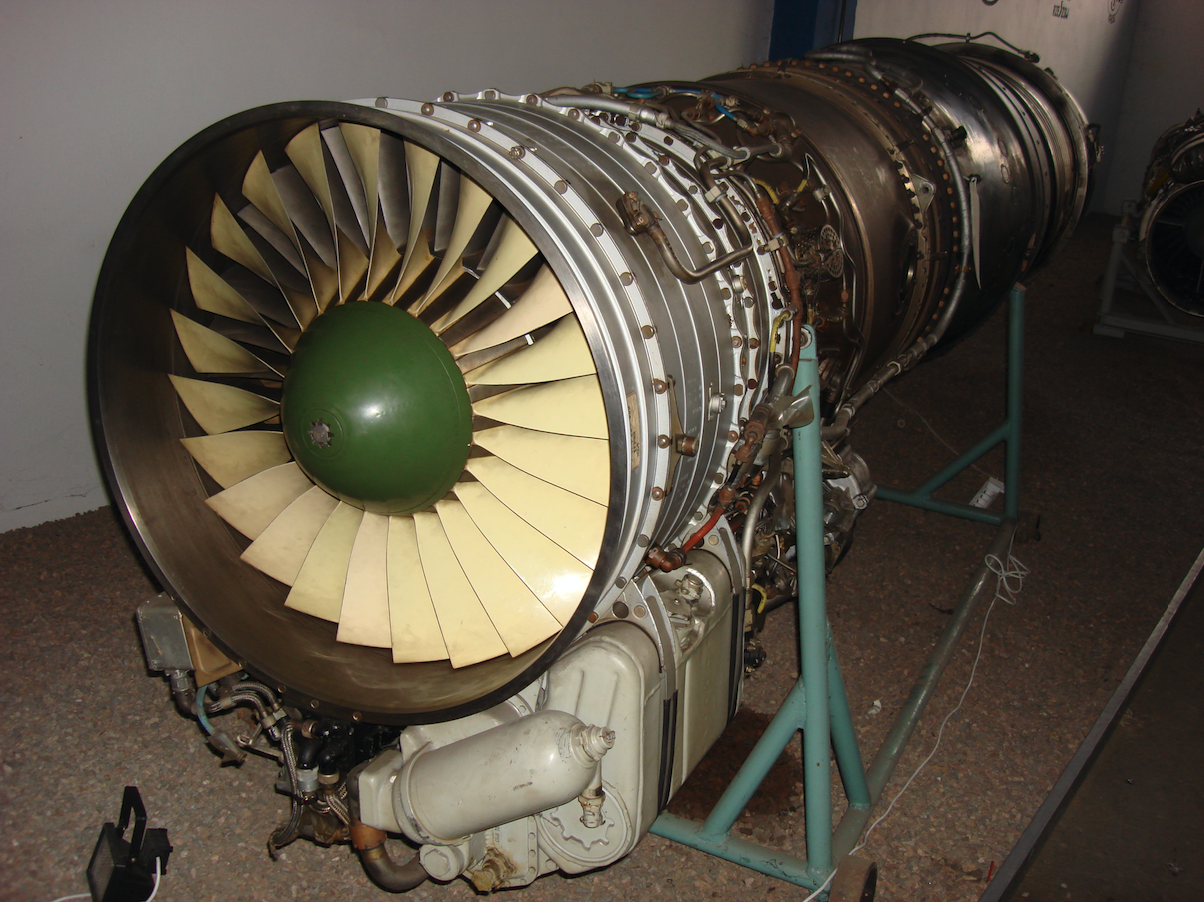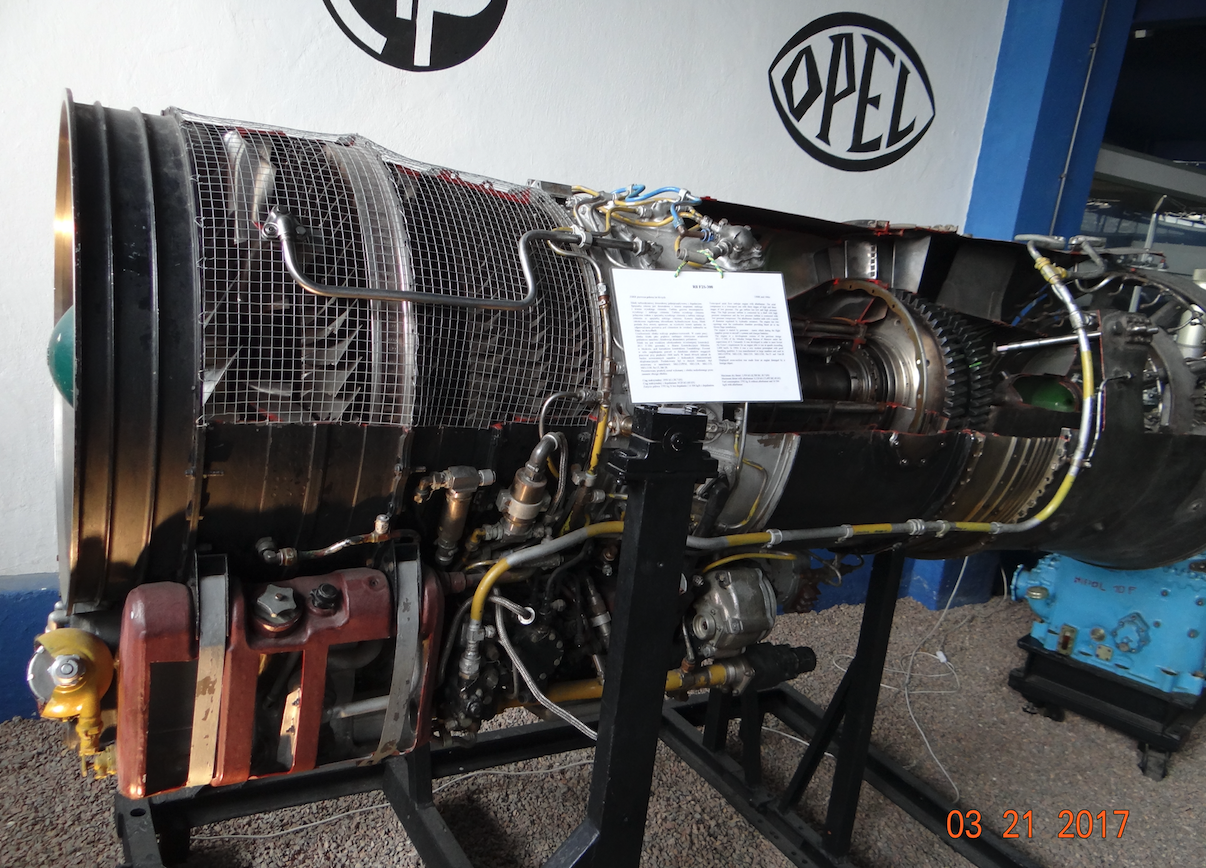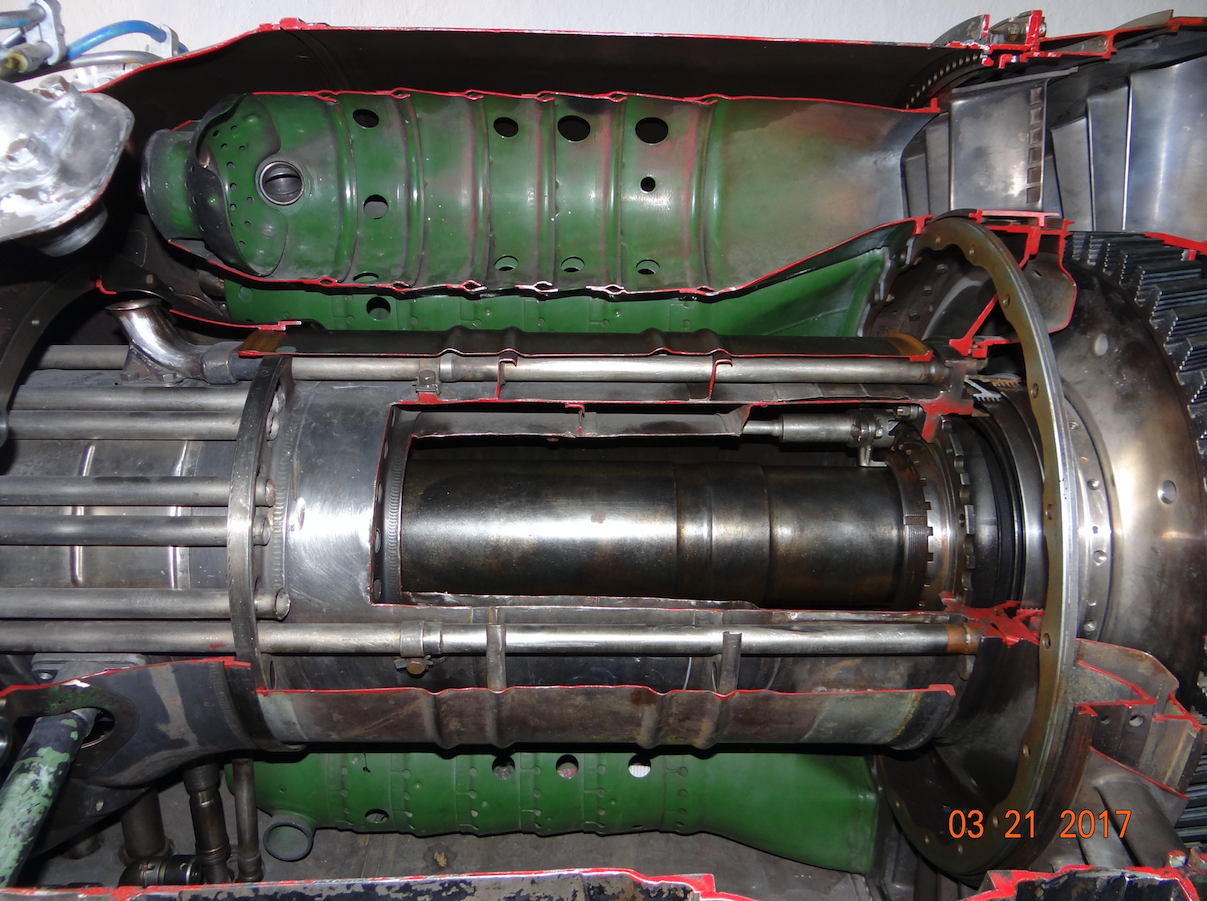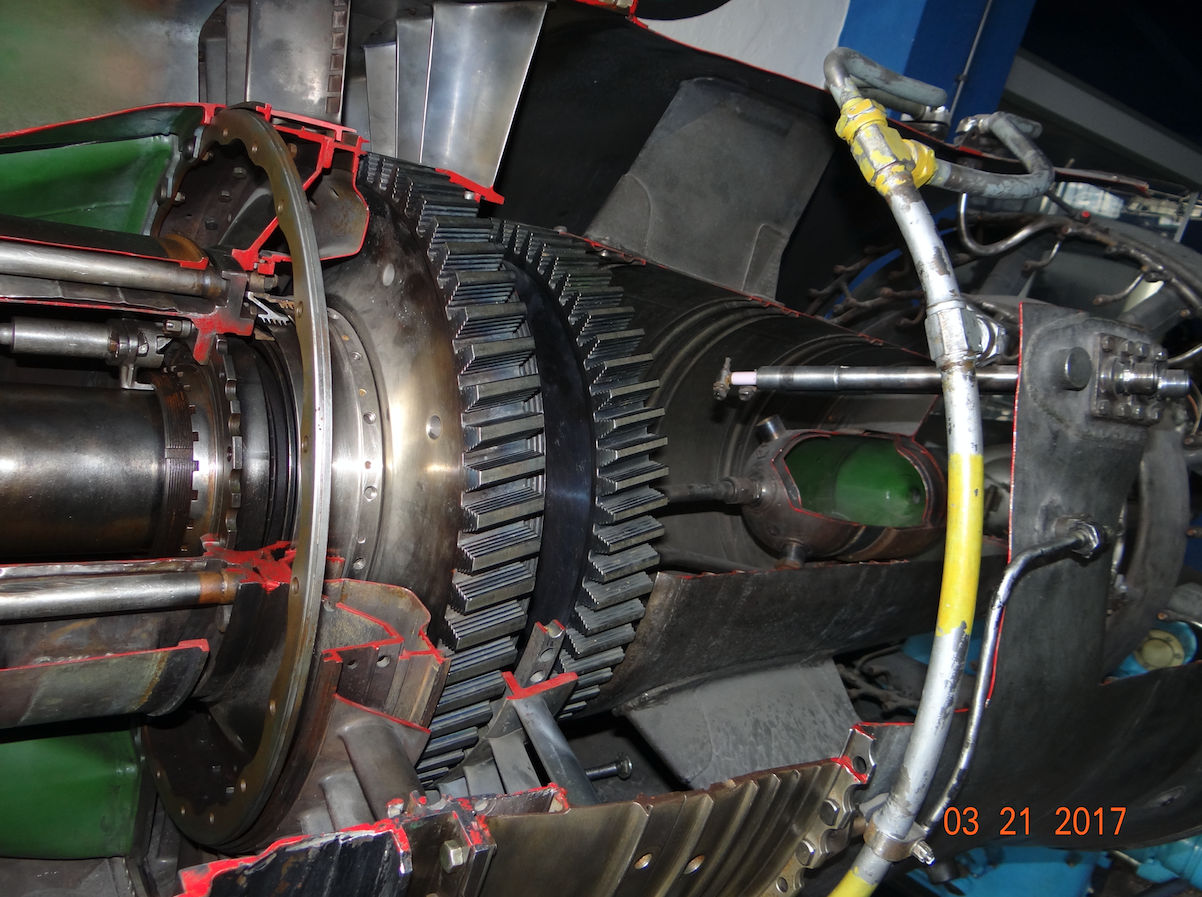Kraków 2020-11-01
Historia silnika RD-11/R-11. 1955 rok.
Informacje o silnikach Bristol Olimpus oraz General Electric J57 przeniknęły do CCCP. W latach 1952-1954, moskiewski instytut lotnictwa dokonał obliczeń aerodynamicznych silnika turboodrzutowego z układem dwóch wałów (pędników, szpul). Obliczenia prowadzono dla osiągnięcia przez przyszły samolot prędkości Ma 2. Główną trudnością było stworzenie sprężarki o dużej stabilności i wystarczającej wydajności gazo-dynamicznej w całym zakresie prędkości postępowej. Z obliczeń wynikało, że taki silnik będzie miał łatwiejszy cykl uruchamiania, będzie lepiej reagował na reakcję przepustnicy (będzie bardziej tolerancyjny na gwałtowne ruchy przepustnicy gazu), w dodatku będzie charakteryzował się niższym zużyciem paliwa. Na podstawie tych obliczeń Siergiej Tumański opracował silnik RD-11, który stał się napędem samolotu myśliwskiego MiG-21. Jest to zdecydowanie lepszy silnik od poprzednika RD-9. Zanim w 1955 roku, konstruktor Aleksandr Mikulin stracił swoje stanowisko w OKB-300, jego zespół przystąpił już do pracy nad przełomowym silnikiem turboodrzutowym w CCCP. Silnik początkowo miał oznaczenie AM-11, później RD-11 i ostatecznie R-11. Następcą Aleksandra Mikulina został Siergiej Tumański, który kierował pracami nad programem.
W 1954 roku, całością prac kierował Aleksandr Mikulin. Na prowadzącego projekt techniczny wyznaczył on Siergieja Tumański, a na konsultanta ze strony naukowej Borisa Siergiejewicza Stechkina (Борис Сергеевич Стечкин). Prace rozpoczęto oficjalnie w maju 1953 roku. Początkowo dla silnika AM-11 przewidywano po cztery łożyska na każdym wale. To jednak mogłoby powodować trudności w przyszłych remontach. Inżynierowie sporo czasu spędzili nad taką konstrukcją sprężarki, aby była możliwość jej wymiany bez całkowitego rozmontowania silnika. Był to krok w kierunku modułowej konstrukcji silnika. Dla silnika opracowano ogranicznik maksymalnej temperatury przed turbiną. Wprowadzono także ogranicznik prędkości obrotowej pędników.
Teraz nastąpiły wydarzenia, w zasadzie typowe w CCCP, które doprowadziły do usunięcia Aleksandra Mikulina z piastowanego stanowiska. Uczynił to minister przemysłu lotniczego Paweł Dymitriew (Пётр Васильевич Дементьев). Notabene, Paweł Dymitriew był ministrem przemysłu lotniczego w CCCP od 1953 roku do 1977 roku, kiedy to umarł. W CCCP było to stanowisko dożywotnie !? W niektórych publikacjach jest podane, że Aleksandr Mikulin „ciężko zachorował”. Biuro OKB-300 było kontrolowane przez wiele komisji. Sformułowano zarzuty wobec Aleksandra Mikulina. Wśród zarzutów było stwierdzenie, „że na świecie do tej pory nie ma zastosowania silnik turboodrzutowy w układzie dwu-wałowym”, co było ewidentnym kłamstwem. Prawdopodobnie chodziło o ukrycie informacji pozyskanych przez wywiad radziecki na Zachodzie, aby chronić szpiegów. Gdyż rosjanie nie przerwali pracy nad silnikiem AM-11 i rozpoczęli testy w locie. Zmienili tylko jego oznaczenie, co miało sugerować rozpoczęcie nowego programu.
Pierwsze uruchomienie silnika oznaczonego R-11-300 nastąpiło w 1955 roku, na stanowisku naziemnym. Silnik miał ciąg 5 100 kg (50,03 kN) z dopalaniem. Po testach silnik otrzymał zgodę dla rozpoczęcia prób w locie. Silnik zamontowano na eksperymentalnym samolocie E-5, który pierwszy lot wykonał w dniu 9 stycznia 1956 roku. Pilotem był V. A. Niefiedow. W dniu 20 lutego 1956 roku, podczas kolejnych lotów, doszło do zniszczenia łopatek turbiny. Sytuacja powtórzyła się w maju 1956 roku. Całe lato 1956 roku, konstruktorzy starali się rozwiązać problem, ale bezskutecznie. Doszło do tego, że Siergiej Konstantynowicz Tumański (Сергей Константинович Туманский) w dniu 18 października 1956 roku, wprowadził zakaz lotów samolotów z silnikami R-11-300. Dalsze prace spowodowały powiększenie komory spalania i poprawę jej chłodzenia. Wydłużono czas zwiększania obrotów silnika. Udało się rozwiązać większość istotnych problemów. Zmieniono oznaczenie silnika na R-11F-300 (F – forsiwny). Nr „300” w nazwie silnika oznacza zakład przy którym funkcjonowało biuro OKB. Wszystkie testy silnika ukończono w dniu 30 czerwca 1958 roku, i wydano certyfikat dopuszczenia do lotów.
Podstawowa wersja silnika R-11F-300 ma ciąg 3 800 kG (37,27 kN) bez dopalania i 5 625 kG (55,16 kN) z dopalaniem.
Nacisk Kremla na uruchomienie produkcji nowego myśliwca był tak duży, że w 1957 roku w zakładzie Nr 31 w Tbilisi podjęto produkcję seryjną samolotu MiG-21 (pierwszej odmiany) z silnikami R-11F-300. Zbudowano tylko 5 samolotów, bo maszyna była niedopracowana i trapiły ją liczne usterki. Głównie sterowania silnika. Dopiero w maju 1958 roku, silnik i samolot były dopracowane i uruchomiono produkcję seryjną MiG-21 F.
Budowa silnika R-11.
Konstrukcyjnie silnik R-11 F-300 został zbudowany jako jedno-przepływowy, dwu-wałowy, z regulowaną dyszą wylotową. Składa się z 3-stopniowej sprężarki pierwszego wału, 3-stopniowej sprężarki drugiego wału, komory spalania, 1-stopień turbiny drugiego wału, 1-stopień turbiny pierwszego wału, komory dopalacza i regulowanej dyszy wylotowej. Skrzynkę agregatów i układów olejowych umieszczono pod silnikiem. Paliwo do silnika podają dwie pompy. Pierwsza zasila komorę spalania, druga zasila dopalacz. Rozruch silnika następuje przy pomocy prądo-rozrusznika, który po uruchomieniu silnika pracuje jako prądnica.
Długość silnika około 4,55 m, średnica 0,906 m, masa około 1 200 kg (suchy 1 124 kG). Okres między remontowy silnika wynosi 300 godzin lotu. Kompresja sprężarki wynosi 8,9:1. Orientacyjne zużycie paliwa; 0,9 kg paliwa / kG / 1 godzinę bez dopalania oraz 2,4 kg paliwa / kG / 1 godzinę z dopalaniem. Inaczej: 97 kg / (h · kN) (0,95 lb / (h · lbf)) na biegu jałowym i 242 kg / (h · kN) (2,37 lb / (h · lbf)) z dopalaczem. Stosunek ciągu do masy: 53.9 N / kg (5,5: 1).
Warto w tym miejscu wspomnieć o drobnej, ale istotnej zmiany, czyli przeniesieniu skrzynki agregatów i układów olejowych z góry silnika pod jego spód. Poprzednio, kiedy nastąpiło rozszczelnienie układu olejowego, cieknący olej zapalał się od gorących elementów silnika i wywoływał pożar. Teraz cieknący olej nie zapalał się tak łatwo.
W samolocie MiG-21 powietrze do silnika dostarczane jest poprzez czołowy-centralny chwyt powietrza, zaopatrzony w stożek. Stożek ten jest ruchomy po-osiowo i może zajmować automatycznie jedną z trzech pozycji. Jest to sposób regulacji ilości pobieranego powietrza i jego ciśnienia w kanale dolotowym. Na stożku tym w locie naddźwiękowym powstają skośne fale uderzeniowe. Jednym z ich efektów jest wytracenie prędkości powietrza do prędkości poddźwiękowej. Jest to konieczne, gdyż sprężarka silnika pracuje na powietrzu o prędkości poddźwiękowej. Zaraz za stożkiem kanał powietrzny rozwidla się omijając kabinę po bokach, aby się połączyć tuż przed silnikiem. Kanał powietrzny wyposażono w dwa zestawy klapek-upustów. Pierwszy zestaw znajduje się po bokach zaraz za chwytem powietrza, drugi na wysokości kabiny pilota. Ich zadaniem podstawowym jest niedopuszczenie do powstania pompażu silnika, zjawiska niepożądanego, które doprowadza do jego zgaśnięcia. Jednym słowem, po-osiowy ruch stożka i klapki-upusty zapewniają optymalną pracę sprężarki silnika, czy to na ziemi, czy w powietrzu i to bez udziału pilota.
Silnik S. K. Tumański R-11 został zbudowany w liczbie około 21 000 sztuk. Był podstawowym napędem samolotów MiG-21, Jak-28, Su-15. Wersja bez dopalania napędza samoloty Jak-25, Su-25. Wersjami rozwojowymi były silniki R-13 i R-25.
Podstawowe dane silnika R-11 F2S-300:
Ciąg maksymalny bez dopalania wynosi 3 950 kG. Ciąg maksymalny z dopalaniem 6 120 kG. Masa silnika 1 194 kg. Zużycie paliwa 0,96 kg/kGxh bez dopalania, a 2,37 kg/kGxh z dopalaniem. W Polsce silnik był montowany w samolotach: MiG-21 PFM, MiG-21 R, MiG-21 M, MiG-21 MF.
Opracował Karol Placha Hetman






